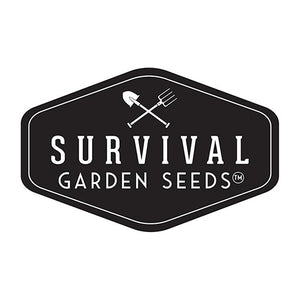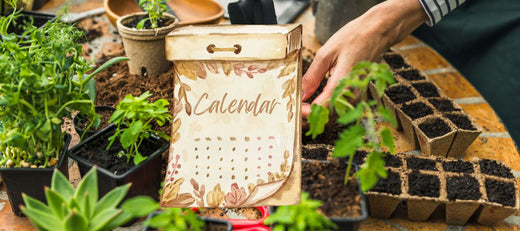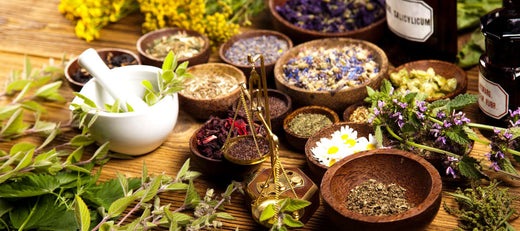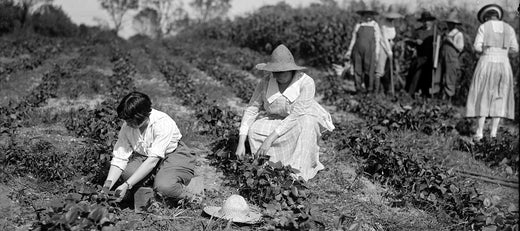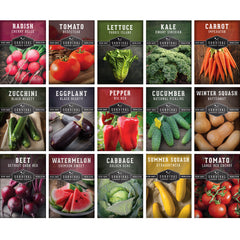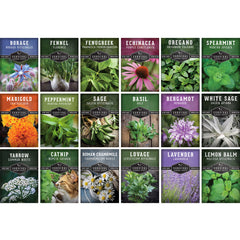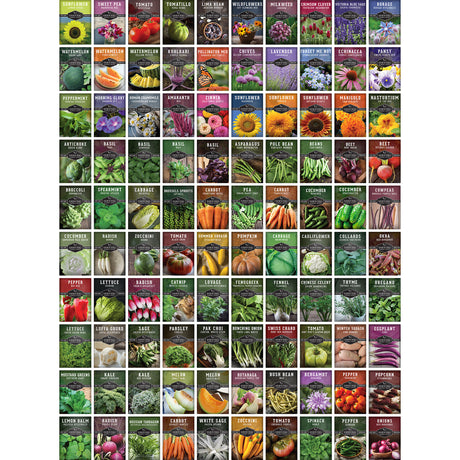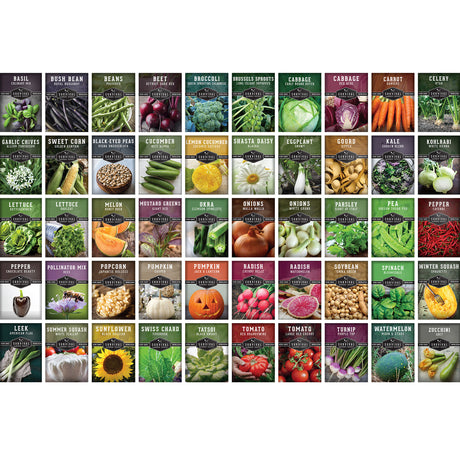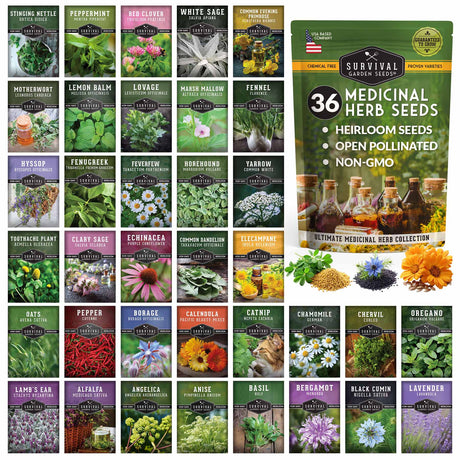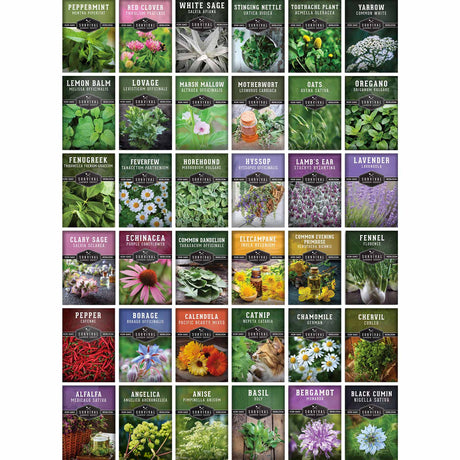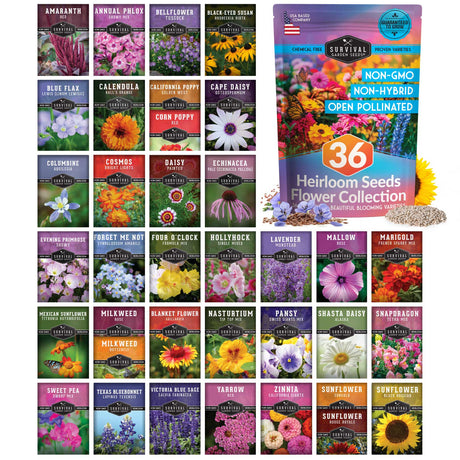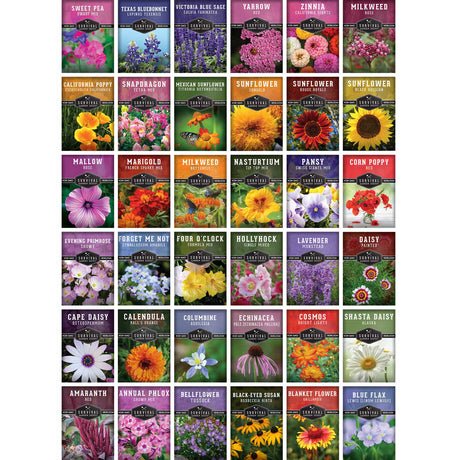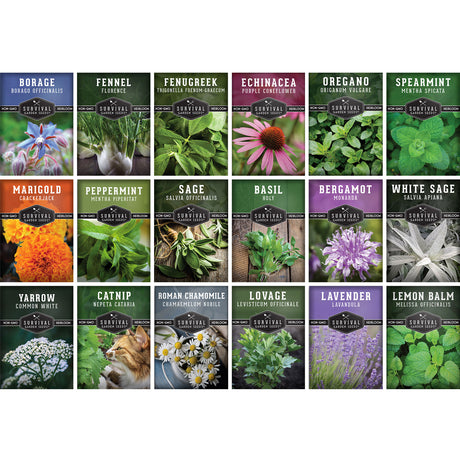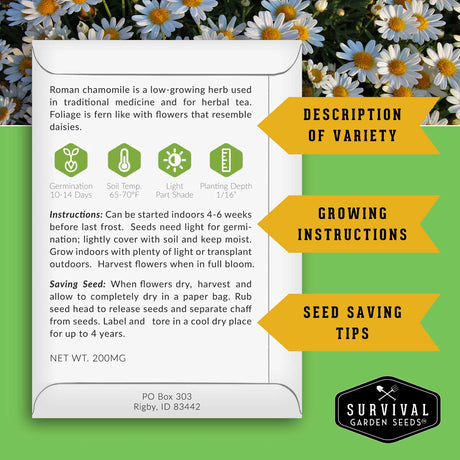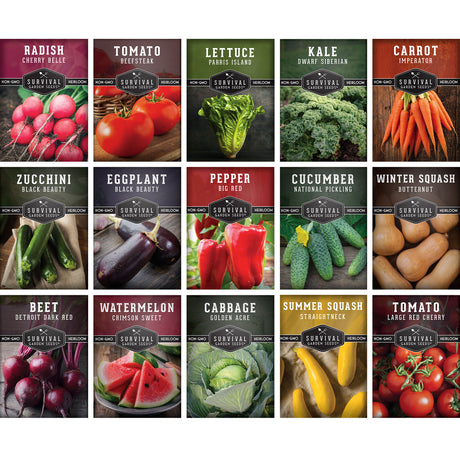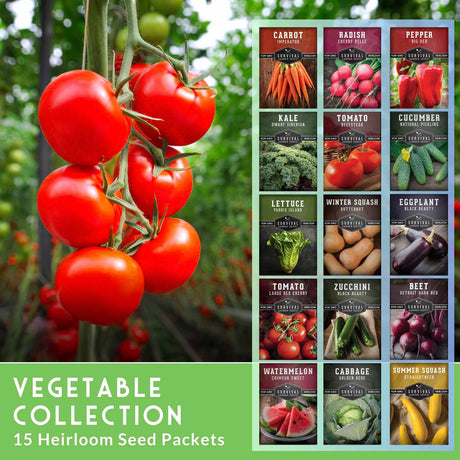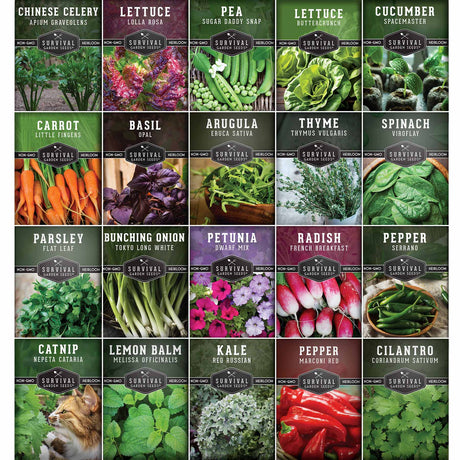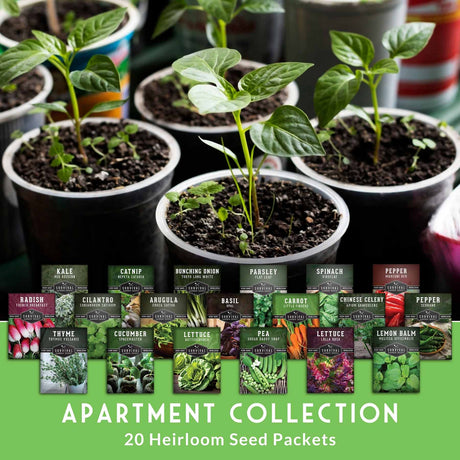Don’t let the heat of summer fool you; July is still prime planting season! While many garden crops are halfway to harvest, there’s still plenty of time to start a new garden or just add some new plants. July is a perfect time to get a jump start on crops that will provide you with a great harvest from late summer through autumn, no matter where you are. You just need to consider your local weather patterns and climate to select the right plants. Let’s look at what seeds to sow right now throughout the continental United States, plus what to avoid so you can save yourself the frustration.
Understand Your Local Climate for Growing Success
Personally, I’m most familiar with the humid, hot summers of the Southeast, and the unusually wet rainy season has pummeled many of my crops and delayed other planting plans. I refuse to let that keep me from growing, though, and that is part of the inspiration for this blog. I’m lucky enough to work on a team with enthusiastic gardeners from all over the United States who help me understand what growing is like in colder or more arid regions.
No matter where you garden, July presents unique opportunities to extend the growing season. Let’s look at what you can sow now, depending on your regional climate:
Northern States (USDA Zones 3-5)

In cooler northern regions, July is a good time to focus on fast-maturing plants that can reach harvest before the first frost, or hardy crops that can withstand a little chill come fall.
- Cool-Season Veggies: Get started with fast-maturing spinach, lettuce, arugula, bok choy, and tatsoi. Bush beans and snap peas can still be planted in July, too.
- Herbs: Cilantro, dill, and parsley will thrive once it gets cooler. Start these seeds now for robust growth in the summer heat, and continuous harvests in autumn.
- Autumn Flowers: Calendula, alyssum, and nasturtiums will give you some late summer color. They’ll flourish as the heat begins to fade in fall.
Mid-Atlantic, Lower Midwest (USDA Zones 6-7)
This moderate climate is perfect for planting all of the above. You can also start succession planting warm-season crops as well as some cool season crops that will thrive in fall.
- Warm-Season Vegetables: Bush beans, summer squash, cucumbers, and zucchini can all be planted in early July. Swiss chard is also a great choice that is adaptable to different seasons.
- Fall Crops: Start your broccoli, cauliflower, and cabbage seeds in July to transplant outdoors in late August. Sow carrots, beets, and radishes directly into the ground for a fall harvest.
- Succession Plant Herbs: Basil, lemongrass, and summer savory can all be planted right now. Consider succession planting herbs every 2-3 weeks for continuous harvest.
- Fall Flowers: Annual flowers like sunflowers, zinnias, cosmos, and marigolds can be planted now for late summer blooms. These heat-lovers will provide color until the first frost.
Southern States (USDA Zones 8-9)

In the subtropical climates of the Southern United States, gardeners like myself can focus on varieties that love the heat, plus begin preparations for fall and winter harvests.
- Heat-Tolerant Fast Growing Veg: Plant heat-tolerant lettuce and spinach alternatives like New Zealand spinach and amaranth. Okra thrives in the heat, as do Knuckle Purple Hull Peas, Rattlesnake Beans, and Henderson Lima Beans.
- Fall Crops: Cool-season crops like kale, collards, and mustard greens will mature as temperatures fall. Broccoli and cauliflower can be started indoors for fall transplants, too.
- Heat-Loving Herbs: Fast-growing and heat loving herbs like basil and lemon balm will take off quickly right now. Rosemary, thyme, and oregano also are options for year-round harvesting.
- Fall Flowers: The same suggestions apply to the Southern US as cooler zones. Sunflowers, nasturtiums, zinnias, marigolds, and cosmos all can be started right now and will withstand late summer’s heat to bloom in fall.
Southwest & Desert Regions (USDA Zones 9-10)
Desert adapted, drought-tolerant varieties plus some careful timing can help you grow in these zones.
- Drought Tolerant Vegetables: Look for varieties that can withstand drier conditions like Armenian cucumber, Swiss chard, Hale’s Best melons, Contender beans, and Sugar Baby watermelons.
- Fall Veg Preparation: Begin planting seeds for fall gardens, including heat-tolerant varieties of lettuce, spinach, and other cool-season crops that will mature as temperatures drop.
- Mediterranean Herbs: Many of our tastiest herbs originated in arid zones. Rosemary, Oregano, and Thyme handle heat well. Our Drought-Tolerant Herbs & Flowers Collection is a good start.
- Desert-Tough Flowers: Calendula varieties like Apricot Beauty and Pacific Beauty handle extreme heat well when planted for fall blooms. Black-eyed Susan and Spotted Bee Balm are native choices that thrive in hot, dry conditions once established.
Pacific Northwest (USDA Zones 8-9)

Although it shares a growing zone with the South, this region’s climate is dramatically different. It has mild summers and long, temperate autumns, allowing for extended growing seasons and unique July planting opportunities.
- Summer Vegetables: Take advantage of the moderate climate to plant bush beans, lettuce, and cool-season crops. The mild summers allow for extended growing seasons.
- Fall Harvest: Plant fast-maturing winter squash, smaller pumpkins, and late-season tomatoes. The long, mild fall allows these crops to mature properly.
- Herbs: Most herbs thrive in this type of climate, so take your pick! Plant basil, cilantro, parsley, and Mediterranean herbs for extended harvests.
- Flowers: Cool-season flowers like pansies, violas, and calendula will continue to bloom through the mild winter months.
What to Avoid: Heat-Sensitive Crops
Although there’s still plenty to plant in July, certain crops struggle in intense summer heat, so it’s best to choose heat adapted varieties or alternatives. For example, spinach often bolts quickly in July heat, so choose heat-tolerant alternatives like New Zealand Spinach or Perpetual Spinach (a Swiss Chard variety) instead. Choose heat-tolerant lettuces like Buttercrunch, Black Seeded Simpson, Green or Red Salad Bowl, and Oakleaf. Romaine types like Parris Island or Red Romaine can work in cooler zones with some shade but are more prone to bolting. Make sure to keep them well-watered and provide protection from afternoon sun. Cool-season crops like garden peas typically perform poorly in July heat across most of the continental United States.
Traditional cole crops like standard broccoli and cauliflower varieties may struggle if planted outside too early in July in hot climates. Either wait until late July or August in southern regions, or start them inside and transplant outdoors once it gets cooler.
General July Gardening Tips
July heat can stress newly planted seeds. To avoid this, improve the soil with compost and aim for a balance between good drainage and moisture retention. Plant early in the morning or late evening to reduce transplant shock caused by hot soil. Water immediately after planting and maintain consistent moisture so your seeds germinate well.
Deep, infrequent watering encourages strong root development. Water in the early morning and at the base of the plants to reduce evaporation and prevent fungus problems. Consider drip irrigation or soaker hoses to help you out. Use mulch to protect the soil and keep it from drying out.
Heat protection like shade cloth or row covers can help prevent sunburn on sensitive plants if the sun is intense in your area. When you plant, consider companion plantings and the shade of taller plants that can also provide some relief to tender seedlings.
Reaping the Rewards of Your July Plantings
Growing a garden in July from seed is absolutely possible! It just requires a little strategy and careful planning. Focus on heat-tolerant, quick maturing varieties that perform well in your climate. You’ll be able to enjoy fresh harvests and fall beauty for a longer season when gardeners have thrown in the towel. Embrace the challenge of July planting and learn why mid-summer is an excellent time to sow seeds for fall harvest.

